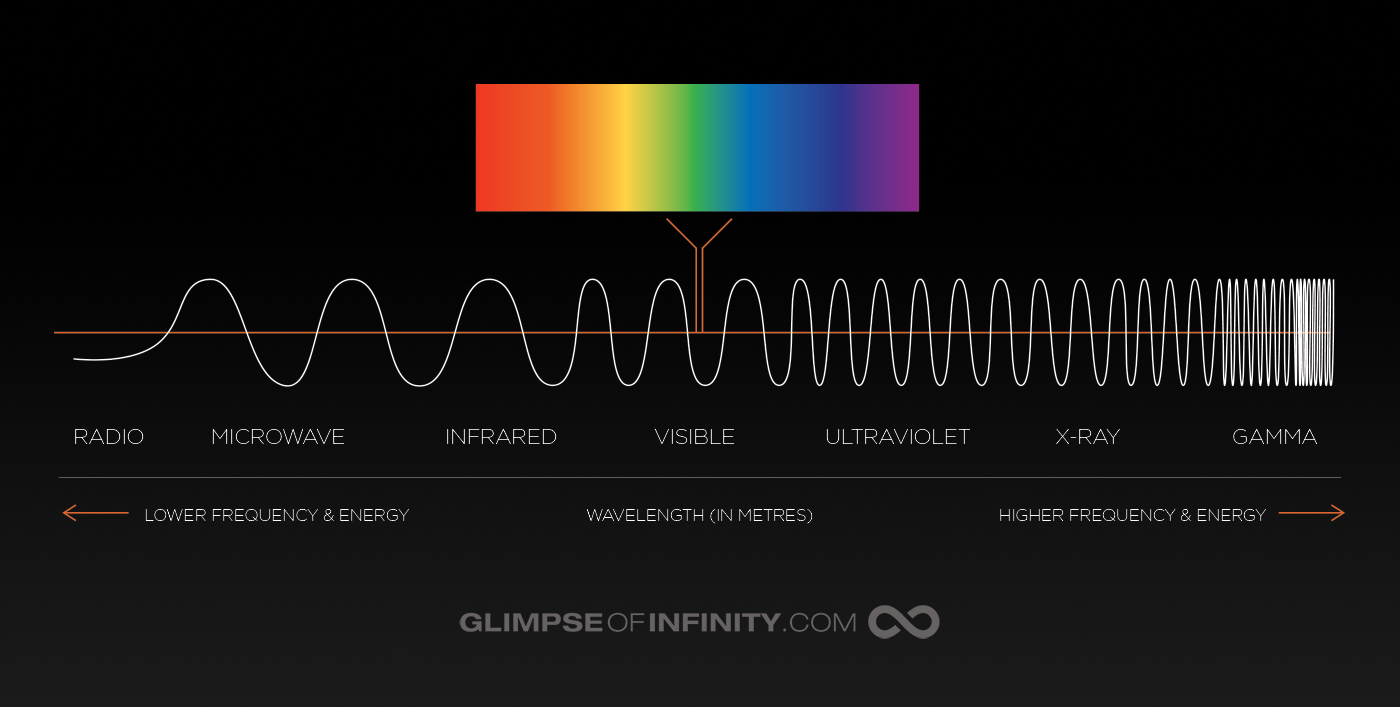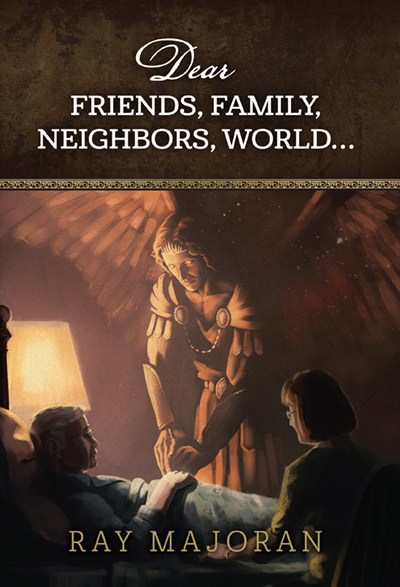Before I get into some crazy observations, take yourself back to high school science class for a moment. You likely would have learned about a thing called the electromagnetic spectrum of light. It sounds complicated, but it’s not.
The electromagnetic spectrum of light is a collection of all the electromagnetic radiation, according to frequency and wavelength.
There are radio waves, microwaves, infrared waves, visible light rays, ultraviolet rays, x-rays, and gamma rays.

All electromagnetic waves travel at the speed of light through a vacuum (~ 300000 km/s), but only a very small portion of that spectrum can be seen by our eyes; that is called visible light.
For example, when I take a photograph using a regular camera and lens, I capture the result of visible light.
 When He Appears
When He Appears
 Moose Tracks
Moose Tracks
 Marvelous
Marvelous
 The White Horse
The White Horse
When I take photos of nebulas in deep space, I do it using the same method. For many of my space photographs, I use a technique called long-exposure photography, which records visible light for an extended timeframe so that I can get sharp, clear images.
 Come
Come
 Out of the Whirlwind
Out of the Whirlwind
 Breath
Breath
 The Beginning of His Work
The Beginning of His Work
But there’s another method I can also use. With the use of special frequency-specific filters, I can capture things like hydrogen, oxygen, and sulfur—things that the human eye can’t see on its own because they are not part of the visible light frequency. In the deep space photo on the right, blue represents oxygen, green is hydrogen, and orange/red is sulfur. These color combinations are also known as the Hubble Palette.
(For more information on how I capture these images, scroll down to My Camera Equipment & Processing on this page.)
 Higher
Higher
 The Ultimate Love
The Ultimate Love
 Established
Established
 Dominion
Dominion
We encounter these techniques in everyday things like Wi-Fi, radio, television signals, cell phones, bone-scan x-rays, and MRIs. Yes, these waves are all part of the electromagnetic spectrum of light.
(For more reading on this subject, check out NASA’s Hubblesite.)
Here’s where it gets really interesting… If you took the entire electromagnetic spectrum of light—radio waves, microwaves, infrared waves, visible light rays, ultraviolet rays, x-rays, and gamma rays—and you stretched that spectrum like measuring tape from Los Angeles to New York City, how much of that spectrum do you think you’d be capable of seeing?
The answer: The visible range of light that you’d be able to see is equal to the size of a dime! That’s it! Yet we make life-changing decisions every single day based only on what we can see.

Now faith is the assurance of things hoped for, the conviction of things not seen. By faith we understand that the universe was created by the word of God, so that what is seen was not made out of things that are visible. (Hebrews 11:1,3)
The next time you make a decision, consider the dime and remember faith.
For without faith it is impossible to please him, for whoever would draw near to God must believe that he exists and that he rewards those who seek him. (Hebrews 11:6)
 The Curtain
The Curtain
Every morning, I send an email featuring photos that I've taken from around the world, along with a Scripture verse. If you'd like to receive these emails, please enter your information below.
 If you were dying and you had one last chance to talk with the people that matter most to you, what would you say? If everything was on the line, and nothing was left on the table, what wisdom would you impart? My name is Ray Majoran, and this book is my last lecture.
If you were dying and you had one last chance to talk with the people that matter most to you, what would you say? If everything was on the line, and nothing was left on the table, what wisdom would you impart? My name is Ray Majoran, and this book is my last lecture.
 Do we see the amazing beauty in the things that God has created, the people He's brought into our lives, the situations He's put us in? Or do we live in a bubble, oblivious to His amazing wonder happening all around us? unOblivious is a 160-page photo-essay that helps answer that question.
Do we see the amazing beauty in the things that God has created, the people He's brought into our lives, the situations He's put us in? Or do we live in a bubble, oblivious to His amazing wonder happening all around us? unOblivious is a 160-page photo-essay that helps answer that question.
Where were you when I laid the earth's foundation? Tell me, if you understand. Who marked off its dimensions? Surely you know! Who stretched a measuring line across it? On what were its footings set, or who laid its cornerstone-while the morning stars sang together and all the angels shouted for joy? - Job 38:4-7 NIV
 Where Were You?
Where Were You?